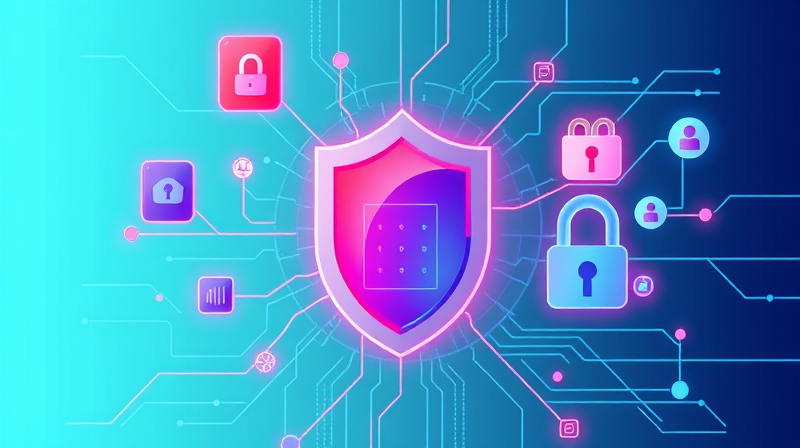In today's digital era, cyber-safety is not just a technical requirement but a daily necessity. As threat actors evolve their techniques and move faster than ever, it is crucial to equip yourself with effective strategies and knowledge to shield your personal and professional information. The challenges may be significant, yet every proactive measure taken will contribute to a safer digital environment.
With cybercrime statistics rising each year, our understanding and defensive practices must grow equally fast. The digital landscape is continuously changing, demanding vigilance and a committed approach to securing our online lives.
The Evolving Cyber Threat Landscape
Every day, the digital environment is confronted with a barrage of malicious attempts designed to exploit vulnerabilities. Global damages from cybercrime are predicted to reach astronomical figures, and the reality is that our individual actions contribute to a much larger picture. Understanding the magnitude of these incidents is the first step toward creating resilient defenses.
Attackers continuously refine their approaches, making every internet-connected device a potential target. The pace of cyber threats has accelerated, with millions of attacks unfolding every day. It is not merely about the scale and complexity of these threats; it is about the constant need to update and upgrade our defenses in response to a rapidly evolving adversary.
Key Day-to-Day Threats
Keeping pace with modern cyber threats means being aware of their common forms. Several recurring risks threaten our digital well-being. Among these, phishing, ransomware, supply chain attacks, and AI-powered threats stand out as particularly concerning.
- Phishing and Social Engineering: Malicious actors employ highly sophisticated tactics, leveraging current events and even AI-generated content to craft deceiving messages. Their goal is to steal credentials or force inadvertent installation of malware, putting individuals and organizations at significant risk.
- Ransomware and Malware: With the surge in cases affecting critical infrastructures such as healthcare and large enterprises, ransomware attacks are proving particularly costly. The evolution of malware techniques means that every downloaded file or clicked link has the potential to unleash damage.
- Supply Chain Attacks: By targeting third-party vendors, attackers can compromise entire networks. These threats remind us that our security often depends on the vigilance of others, making collaboration and continuous monitoring essential.
- Encrypted Threats and AI-Powered Attacks: The sophistication of modern attacks is highlighted by the use of encryption to hide malicious activities and AI to create convincing scams. These advancements allow cybercriminals to bypass many traditional security measures.
Each of these threats has a unique impact on our digital lives. When we understand the tools and techniques used by cybercriminals, we can better prepare to counteract them.
Essential Cyber-Safety Tips
Adopting foundational cyber safety practices is critical for reducing risk and ensuring that your personal and professional digital assets remain secure. The following guidelines provide a robust framework for establishing a strong defense against everyday cyber threats:
- Use Strong, Unique Passwords: Never underestimate the power of a secure password. A unique, complex password is one of your best defenses against unauthorized access.
- Enable Multi-Factor Authentication (MFA): Adding an extra layer of security through MFA makes it significantly more difficult for attackers to compromise your accounts.
- Keep Software Updated: Regular updates patch security vulnerabilities and offer improved protection against emerging threats. Do not delay these updates.
- Be Wary of Suspicious Emails and Links: Always exercise caution when opening attachments or clicking links, especially from unfamiliar or unexpected sources.
- Back Up Data Regularly: In the event of a breach, having secure backups can mean the difference between recovery and irreversible loss.
- Educate Yourself and Employees: A well-informed community or team is your most powerful asset. Continuous education and training can mitigate human error, which is one of the most common vulnerabilities.
- Use Encrypted Communication: Encrypt sensitive data during transmission. This practice is vital to protect your information against interception and eavesdropping.
It is essential to understand that no single practice offers complete protection; rather, integrating multiple security layers creates a comprehensive defense that makes it exponentially more difficult for attackers to succeed.
Looking Ahead
The future of cyber-safety lies in preparedness and adaptability. With increasing incidents of cybercrime and the rapid technological advancement in attack methodologies, an integrated approach combining technology, education, and continuous vigilance is necessary.
Organizations and individuals both face the immense challenge of safeguarding their digital presence in an environment where threats are constantly evolving. Future strategies must take into account not just technological enhancements but also the human element. It is vital that we continue to educate, adapt, and stay ahead of potential threats.
The journey towards robust cyber-safety is ongoing. By embracing comprehensive prevention strategies and remaining committed to learning new defense techniques, you empower yourself to navigate digital hazards with confidence. Your personal commitment to cyber-hygiene can inspire a culture of security that benefits everyone in an increasingly interconnected world.
Every proactive step, whether it is updating software, rethinking password policies, or educating peers about potential threats, can fortify your cyber-resilience. Let the understanding of these essential basics be the foundation upon which you build a safer digital future, inspiring confidence and security amid the evolving cyber threat landscape.








